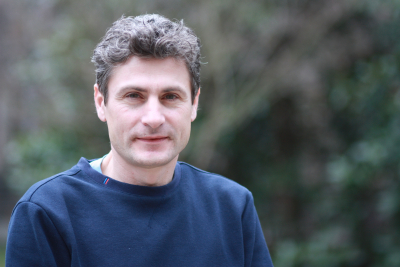Paul Dudenhefer

Cataclysmic, persistent—and above all theoretically impossible, the Great Depression forced economists to think anew about the economy and challenged their understanding of how the economy works.
Michaël Assous, a 2022–23 HOPE Center visiting scholar, has been telling the story of some of those economists for a number of years now, focusing on the mathematical models they developed to explain how the economy could get so off track—and to help them prevent a severe depression from ever happening again.
“At the time of the depression, economists were steeped in the classical tradition begun by Adam Smith and refined by people like John Stuart Mill and Karl Marx,” Michaël, a professor at the University of Lyon, explains. “It was a tradition that told them that markets eventually recover, all on their own. But they could look around and see that that wasn’t happening.”
So economists—or at least a subset of them, including Michał Kalecki, the Polish-born Marxist and socialist who anticipated Keynes’s General Theory, and the first winners of the Nobel Prize in economics, the Dutch economist Jan Tinbergen and the Norwegian economist Ragnar Frisch—went to work. Quickly concluding that the “literary” approaches and tools they had inherited were insufficient, they turned to statistics and mathematics.
“In the 1930s you had this feverish effort to produce mathematical models of the whole economy, ones that could be manipulated and solved so that policymakers could know what benchmarks to aim for,” Michaël says.
What made the models truly innovative was their dynamic nature: they could allow for change over time in important economic parameters such as the unemployment rate or the interest rate.
When it came to such models, the watchword was instability. “People like Kalecki, Frisch, and Tinbergen sought to create models that could represent the instability of an economy, its potential not only to fall into a depression but to outright collapse,” Michaël, who plays tennis when he’s not writing about macroeconomics, says.
“And the wonder is that they eventually succeeded.”
Indeed, Michaël’s first book is titled Modeling Economic Instability. Published by Springer in 2022 and written with another current visiting scholar, Vincent Carret, the book takes readers through several macroeconomic models that were created in the wake of the Great Depression, capturing along the way “a young science [macroeconomics] in construction.”
Michaël is already planning his next book, which he is writing with Alain Raybaut of the French National Centre for Scientific Research. It will look at the model builders of the 1940s and 1950s, with a special focus on how their models implied a particular vision of the economy—and how that vision in turn affected the models. Work on the book will take him to several collections in the Economists’ Papers Archive in the David M. Rubenstein Rare Book and Manuscript Library here at Duke. The papers of Paul Samuelson and his first PhD student, Lawrence Klein, along with those of Robert Solow and the late John Chipman, should be especially relevant.
“Alain and I want to see how the field was consolidated in the postwar period and how new visions and new tools related to growth and instability were developed. Economists in the forties and fifties extended and even improved the work of the 1930s, but also took it in new directions with their emphasis on economic growth.”
This is Michaël’s second stint as a visiting scholar, his first coming in 2012–13. He will return to Lyon in April.